-
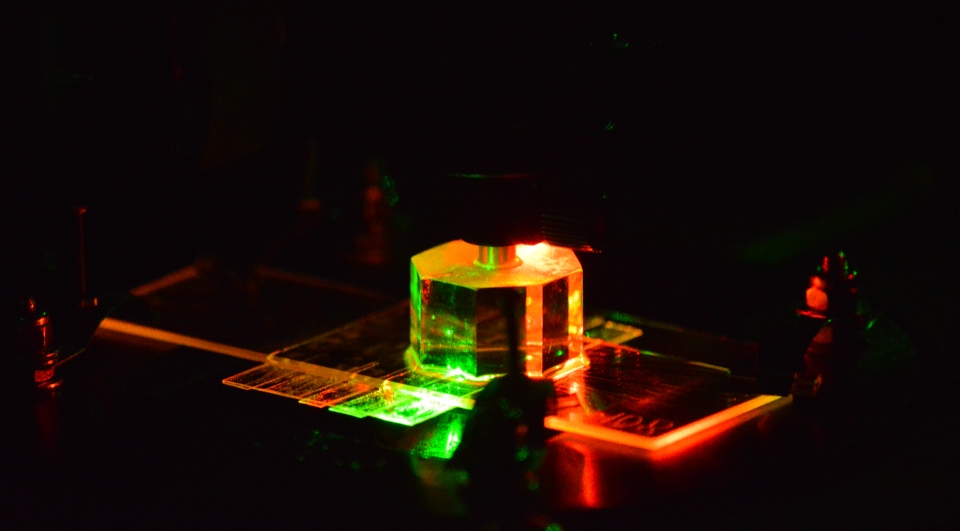
Prism type TIRF used in polarized fluorescence experiments.
-
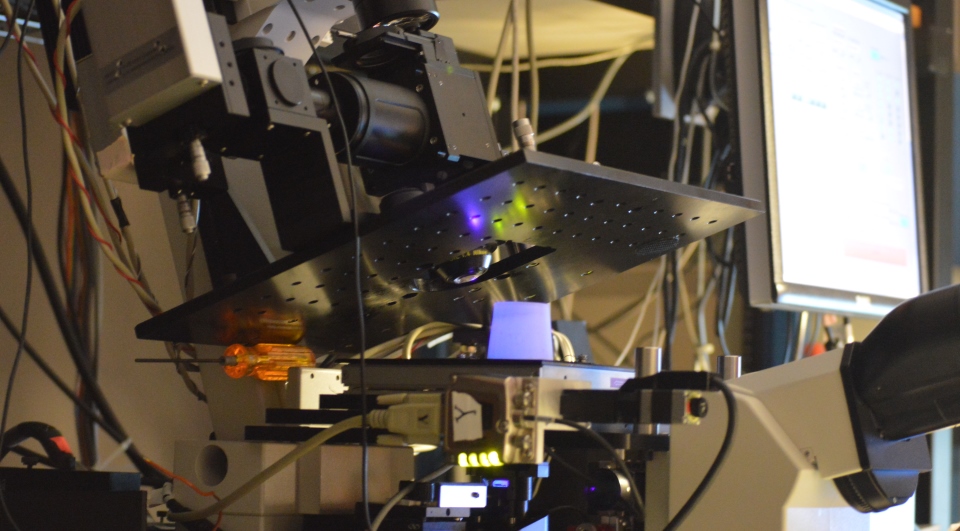
Microscope stage used for optical trapping and TIRF experiments.
-
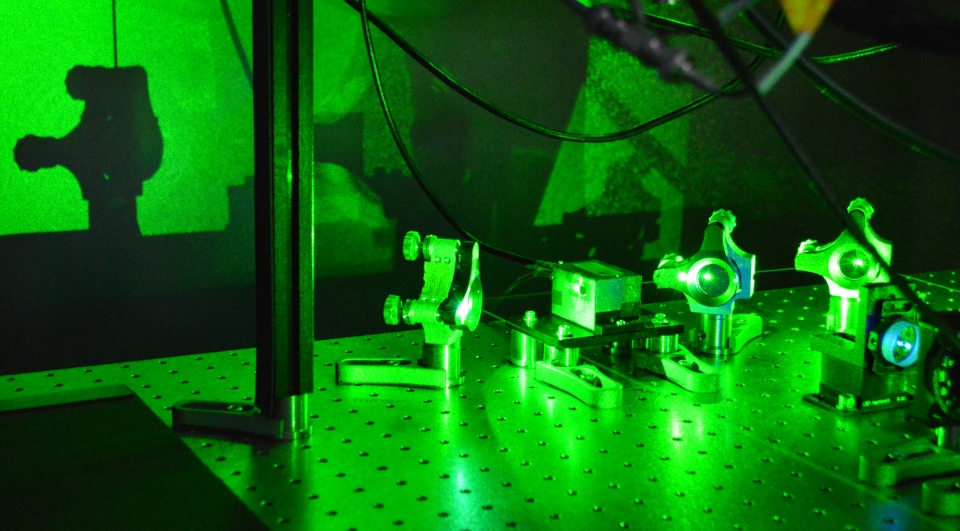
Redirected laser used for polarized fluorescence experiments.
-
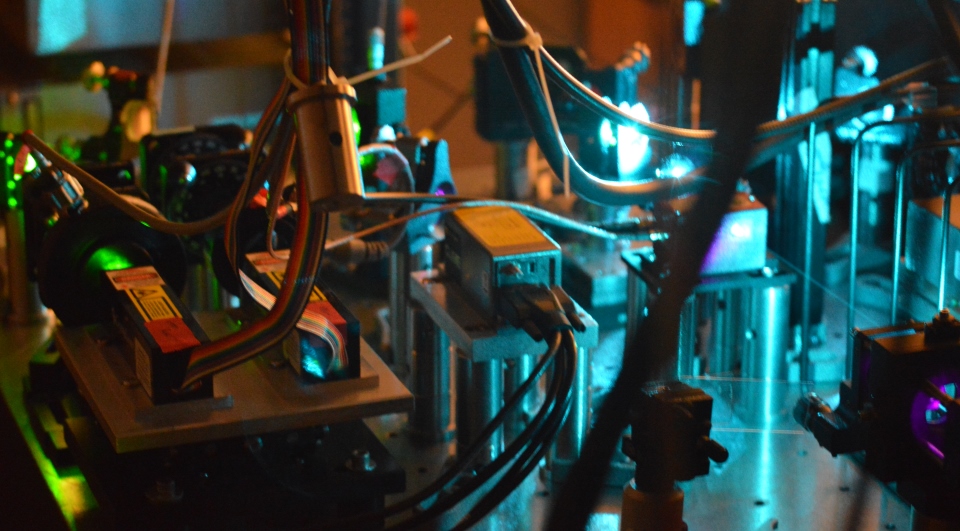
Several of the lasers and electronics used for optical trapping and TIRF experiments.
-
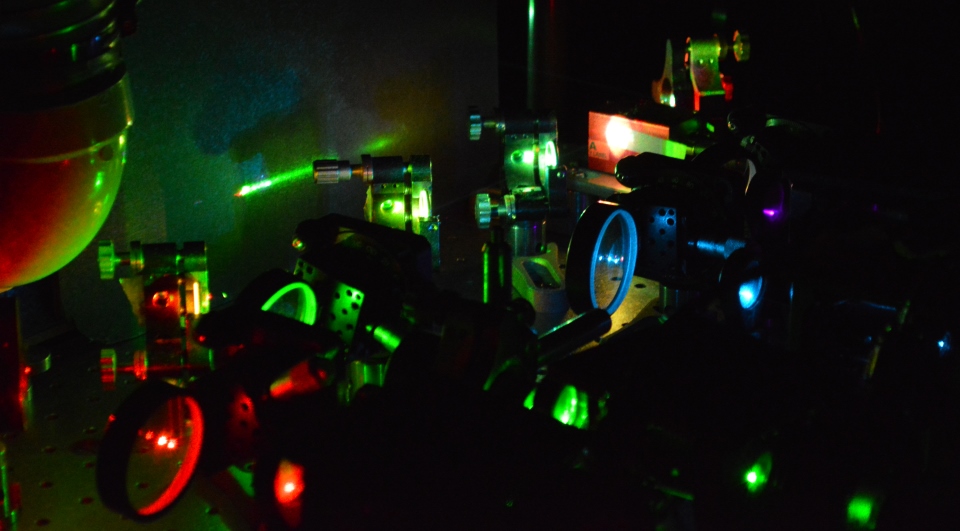
Four color capability for FRET experiments.
Yale E. Goldman Lab

Research Interests
Relating the structural changes to enzymatic reactions and mechanical steps of the energy transduction mechanism by mapping the real-time domain motions of the motor proteins and ribosomal elongation factors.
Keep on Truckin'!
Molecular Motors
Motor proteins and GTP-binding proteins (G-proteins) share many structural and functional attributes. Molecular motors myosin, dynein and kinesin are prototype biological energy transducers that can be understood at a particularly fine level of detail. The obvious functional output (force and motion) allow the reaction sequence to be probed by single molecule biophysical, chemical and structural studies. A cyclic interaction between actin and myosin transforms free energy of splitting ATP into motion and mechanical work. Modified forms of this mechanism power other cell biological motions such as targeted vesicle transport and cell division. We are using novel biophysical techniques, including nanometer tracking of single fluorescent molecules, FRET sensors, bifunctional fluorescent probes and infrared optical traps (laser tweezers) to map the real-time domain motions of the motor proteins.
Protein Synthesis
Although the ribosome has been studied extensively since the unraveling of the genetic code, how it accomplishes the enormous fidelity of messenger RNA translation into amino acid sequences during protein biosynthesis is not understood. The ribosome is a motor translocating along the mRNA exactly 3 bases per elongation cycle. Energy from splitting GTP by G-protein elongation factors (EFs) is transformed into translational accuracy and maintenance of the reading frame. Codon-anticodon base pairing between mRNA and tRNA ‘reads’ the code, but EF-Tu ‘proofreads’ it. EF-G is the motor catalyzing translocation of tRNAs and mRNA. Powerful techniques developed for studies on motor proteins, including single molecule fluorescence and optical traps, may be applied to understand the structural biology, energetics, and function of EFs in their working environment.
Lab News and Member Publications!
AWARDS
Congratulations Yale E. Goldman, MD, PhD for receiving the 2020 Kazuhiko Kinosita Award in Single Molecule Biophysics!
"The Award, founded in 2016, recognizes outstanding researchers for their exceptional contributions in advancing the field of single molecule biophysics. Goldman is being recognized for his pioneering work in measuring and understanding orientations, rotations, and dynamics of motor proteins by developing and using single molecule imaging approaches." ~Biophysical Society
Click here to see the announcement from the Biophysical Society.
Recent Publications
Straightening out the elasticity of myosin cross-bridges. Linari, M, Piazzesi, G, Pertici, I, Dantzig, JA, Goldman, YE, and Lombardi, V. Biophys J. 118:994-1002,2020.
Processivity and velocity for motors stepping on periodic tracks. Mugnai, M.L., Caporizzo, M.A., Goldman, Y.E., and Thirumalai, D. Biophys. J. 118:1537-1551, 2020.
Single molecule mechanics resolves the earliest events in force generation by cardiac myosin. Woody, M.S., Winkelmann, D.A., Capitanio, M., Ostap, E.M., and Goldman Y.E. Elife. 8:e49266, 2019.
Nanoaperture fabrication via colloidal lithography for single molecule fluorescence analysis. Jamiolkowski, RM, Chen, KY, Fiorenza, SA, Tate, AM, Pfeil, SH, and Goldman, YE. PLOS One. 14: e0222964. http://doi.org/10.1371/journal.pone.0222964. 2019.
